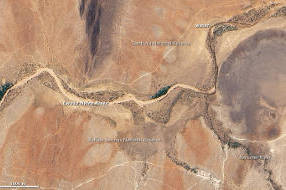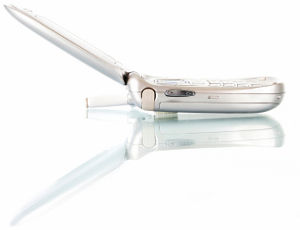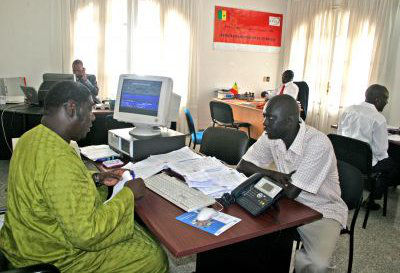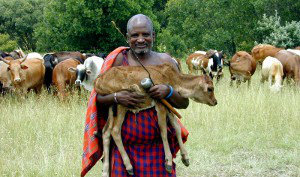Microinsurance and technology
Two billion people remain vulnerable to economic shocks. For microinsurance to reach the two billion people, technology remains a key success factor.
The ILO's Microinsurance Innovation Facility on which we publish below a survey, has examined how microinsurance providers use technology to meet the challenges they face.
The index-based livestock insurance in Kenya
 The arid northern part of Kenya suffered a severe drought in 2009 and hundreds of thousands of animals died. So far, insuring herds of livestock in rural areas of Africa has been almost impossible. The high costs pertaining to the counting of dead animals over vast rural areas have discouraged potential insurers.
The arid northern part of Kenya suffered a severe drought in 2009 and hundreds of thousands of animals died. So far, insuring herds of livestock in rural areas of Africa has been almost impossible. The high costs pertaining to the counting of dead animals over vast rural areas have discouraged potential insurers.
But a new initiative led by the International Livestock Research Institute "ILRI", the insurance company UAP and Equity Bank in Northern Kenya is giving hope at a time when successive droughts are severely hitting the communities concerned.
Satellite images will be used to monitor the landscape. If these images reveal a lack of grass in the designated areas, it will be assumed, then, that the animals are likely to die and their owners are entitled to compensation.
Andrew Mude, an economist at ILRI, says: "The reason this system can work is that getting compensation does not require verifying that an animal is actually dead. Payments kick in when the satellite images, which are available practically in real time, show us forage (vegetation) has become so scarce that animals are likely to perish."
Index-based livestock insurance
The ILRI project aims at:
- providing livestock owners with strategies and tools designed to manage the climate-related risks they face;
- testing the reliability and the impact of livestock insurance indexed on the relationship between the mortality of livestock and the satellite readings of forage availability;
- determining the availability of pasture and its growth according to data extracted from satellite images in a concerned region.
The possible application of this insurance project to larger areas will be facilitated by NASA satellites that take pictures of the entire area of the globe every ten days.
Technological innovation to serve insurance
The use of information and communication technologies (ICT) is designed to:
- improve the coverage of risks;
- reduce the cost of operations;
- preserve the value of property belonging to the insured.
 The river bed Ewaso (Kenya) The river bed Ewaso (Kenya) |
In the Kenyan example above, the satellite images stand for some kind of advanced microinsurance. The use of technological innovations allows delivering higher quality services to remote clients, while maintaining operating costs at a reasonable level.
Why technology?
Across the Southern countries, access to information technology is growing at a very high pace. Subscriptions to mobile telephony in developing countries have increased. They rose from some hundreds of thousands at the beginning of the century to 3 billion in 2008. In Africa alone, the rate of mobile phone subscribers is of 40 per 100 persons in 2009. Falling prices of mobile broadband and the increasing availability of 3G networks, the new generation of wireless technologies, are likely to greatly improve access to the internet in the coming years.
 In addition, the "global digital divide" could potentially have a positive side, since developing countries are able to bypass obsolete stages of technology and directly access the new advancements. These breakthroughs, such as satellite data, global positioning systems (GPS) and point of sale terminals, may push microinsurance to develop.
In addition, the "global digital divide" could potentially have a positive side, since developing countries are able to bypass obsolete stages of technology and directly access the new advancements. These breakthroughs, such as satellite data, global positioning systems (GPS) and point of sale terminals, may push microinsurance to develop.
According to representatives of the World Resources Institute, "WRI", the technology leads to two key results that contribute to the revitalization of financial services: it reduces costs and it bridges physical distance.
The high operating costs and the scattering of customers represent two major obstacles to the development of microinsurance, which the Microinsurance Innovation Facility partners are trying to overcome through a range of technological solutions.
The ILO's Microinsurance Innovation Facility was established in 2008 to further the extension of insurance to millions of low-income people in the developing world, with the overall aim of reducing their vulnerability to risk. With support from the Bill and Melinda Gates Foundation, the Facility makes grants to projects throughout the developing world that are using microinsurance in innovative ways.
Bringing added value to clients
 Access to microinsurance is difficult for low-income people, who, often, live, in remote locations. Microinsurers are currently experimenting with new technological solutions to help bridge these distances. Point of sale terminals stand as an example of these solutions. They allow consumers to purchase and pay their premiums remotely, saving both time and money.
Access to microinsurance is difficult for low-income people, who, often, live, in remote locations. Microinsurers are currently experimenting with new technological solutions to help bridge these distances. Point of sale terminals stand as an example of these solutions. They allow consumers to purchase and pay their premiums remotely, saving both time and money.
Mobile phones can also be used to improve access to microinsurance. In Kenya, the British-American Insurance (Britak) has recently launched a new personal accident insurance product for individuals whose risk underwriting and premium payments may be via mobile phones.
Technological innovations also offer unique opportunities to improve services for heath microinsurance. Some insurers in India are already connecting telemedicine, which offers remote diagnoses based on information shared through handheld devices, to insurance products.
To ensure the interests of health insurance products, designing a software is crucial to:
- manage data exchanged between the insurer and the health care provider;
- identify clients effectively;
- store data about clients.
 According to Caroline Phily, grant officer at the ILO's Microinsurance Innovation Facility at ILO, Pioneer, an insurance company based in Kenya, is currently developing a pilot project that uses SMS technology to manage claims.
According to Caroline Phily, grant officer at the ILO's Microinsurance Innovation Facility at ILO, Pioneer, an insurance company based in Kenya, is currently developing a pilot project that uses SMS technology to manage claims.
If an insured wishes to benefit from health care, he or she sends via SMS his or her policy number to Pioneer. If his or her contract is still valid, the insured receives a file number that is mentioned in an application form for reimbursement. This technology makes it possible for Pioneer to reduce the possibility of errors and fraud in the field of health insurance. It also allows the company to control the use of health products and to expedite the reimbursement process. This is a mechanism that insurers can easily implement to manage the volume of transactions and monitor the use of health services by the insured. It is also an effective way of controlling costs.
Back office efficiency
To continue to exist, microinsurance should be able to reduce its operating costs. The viability of an insurance market rests on the existence of a portfolio consisting of a large number of risks. The economies of scale achieved are likely to make the system sustainable.
 Insurers' traditional activities include costly processes of verification of compensation applications, a possibly cumbersome data management and regular premium settlements resulting in a high volume of transactions.
Insurers' traditional activities include costly processes of verification of compensation applications, a possibly cumbersome data management and regular premium settlements resulting in a high volume of transactions.
When this classic insurance model is transposed to a micro scale, maintaining a good operating cost / premium payments ratio becomes difficult. According to Richard Leftley, CEO of MicroEnsure, "If 50% of a poor client's premium goes toward administrative costs, claims payouts are meager and client value plummets. If you had a dollar to invest in your micro-insurance scheme, I'd strongly recommend spending it on back office efficiency."
 The Facility grantees are actively working to find cost effective solutions tailored to the specific needs of institutions.
The Facility grantees are actively working to find cost effective solutions tailored to the specific needs of institutions.
One of the issues insurers face is the difficulty of effectively registering information about clients. "Some institutions have software that allows risk providers to manage the information and print the receipt, but some don't use software beyond Microsoft's Excel. Others prepare their receipts manually" said Yoseph Aseffa, the ILO's Chief Project Advisor and former CEO of the African Insurance Organization.
UAB Vie (Life), an insurer based in Burkina Faso, is currently exploring technological solutions to meet this challenge: "We are currently evaluating the possibility of using mobile phones to gather information about our clients. Our sales team will continue to collect premiums on the market, but information regarding our clients will be transferred directly to our central database, "says Soumaila Sorgho, the company's general manager.
Although the responses of the back-office activities are devoid of the value offered by other technological advances, the continued development of affordable management information system managements (MIS) will be crucial for the growth of the microinsurance industry.
The future of technology and micro-insurance
The development of microinsurance cannot be done without technology. Unfortunately, in most cases, players who are active in this sector are unable to determine the strategy that best meets their needs. This is where the Facility's intervention becomes essential. During the 2010 autumn, it granted with the support of Zurich Financial Services, innovation subsidies to the projects that utilize technology with a view to make microinsurance more accessible.
 Ten years ago, it was difficult to believe that a cattle owner would be able to file a claim application and receive compensation for his cows which died on the basis of satellite images. The next decade will undoubtedly bring new unexpected technological developments: developments that can provide better protection against risk for two billion people who need it most.
Ten years ago, it was difficult to believe that a cattle owner would be able to file a claim application and receive compensation for his cows which died on the basis of satellite images. The next decade will undoubtedly bring new unexpected technological developments: developments that can provide better protection against risk for two billion people who need it most.
Nota: This article has been recommended to Atlas Magazine by the International Labour Organization's Micro-insurance Innovation Facility (ILO), Geneva, whom we thank.